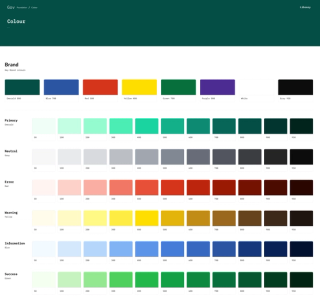When marketing teams approach the topic of web design, they tend to focus on the things that a website can do. They understand (or at least should understand) that a strong website can bring in traffic, generate leads, and develop their brand. However, one key function of a website can easily be overlooked: Its role as a signal of credibility. All too often, a website serves not as an active tool of persuasion or conversion, but rather as a passive test of legitimacy, quality, and status. Understanding and delivering on this need can be crucial to avoiding lost business.
Why credibility matters
This begs the question, what credibility can a website offer? Put simply, a website is the first port of call for many undecided users. A potential customer may have interacted with your brand and seen your product, but remain unconvinced as to your status and legitimacy as a company. They use your site as a test, seeking any insights they can into the value of your offering, and they (often unfairly) equate the quality of your website with that of your product. Here the role of your website is not to persuade, or even to inform. All it needs to do is display the confidence, status and prestige appropriate to your company and your work. Failing to do this is disastrous, as it drives away some of your highest potential visitors, and costs you valuable leads and conversions.
An unfair association
A major driver of the “website test” is a largely irrational association made by consumers. When we view a website, we equate the quality of our experience with the value of the product on offer.* Of course, these two things are not necessarily related, in fact, they almost never are! All too often a brilliant offering is let down by an underwhelming site, for the simple reason that developing these two projects requires completely separate skill sets and areas of expertise.
This association is not, however, completely unfair. A lacklustre website might not logically inform us about your product, but it does provide some hints about your values and beliefs as a firm. After all, if a company cannot invest into informing their customers, do they really value them? And if a company’s product is poorly presented, are they even that proud of it? Whether we like it or not, low quality web design will force your users to ask these questions, and they cannot always be blamed for doing so.
Building credibility
So what actually builds this credibility? The truth is that not all credibility is the same, and your specific solution depends largely on the core message you need to convey to users. To take an example from our previous work, Taoglas sought to build a website that represented their groundbreaking IoT technology. By building a website that looked technical and delivered excellent performance metrics, Kooba could communicate a clear message - Taoglas know the details of their technology, and they build high performing products. Even if a user doesn’t actually engage with the content of the site, they will receive this message clearly across every page.
Different websites assure their users in different ways. Take our recent work with Repromed, where a much more soft and personable design structure helped mitigate any concerns a visitor might have upon arrival. In one sense, this messaging is an integral part of your brand identity, but in another it is truly specific to your website. Visitors to your site are already engaged, so rather than communicating your values for the first time you can instead reinforce and underline them. Success in this regard depends on restraint. Rather than trying to say everything at once, a good website simply reminds its users of why they clicked onto it in the first place.
“Our branding work considers the target audience at every stage of their customer journey, but the website’s role in building credibility is much more specialised. Ultimately the site needs to reassure, not persuade.”
Duncan Menzies, Lead UI Designer, Kooba
Keep the customer satisfied
Sometimes good web design is about doing less, not more. When your product or service can sell itself, and you already possess an attractive and persuasive brand, your website only needs to reassure users of your quality and status. This is still a complicated and challenging task, but it is far easier than trying to persuade, engage and reassure your users all at once. Simply keeping your website in line with your brand and clearly displaying the value of your work can be all you need to see a higher conversion rate and an uptick in leads.
* Numerous studies show a connection between website quality and user perceptions of product quality:
- Fogg et al. (2001) "Trust and Mistrust of Online Health Sites"
- Kim and Stoel (2004) "The Impact of Website Quality on Consumer Trust in E-commerce"
- Corritore, Kracher, and Wiedenbeck (2003) "The Influence of Website Design on Consumer Trust and Purchase Intention"









